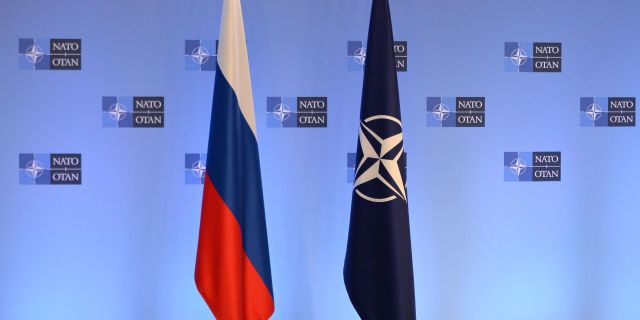Al Mayadeen: NATO has faced unsolvable problems in the military sectorThe latest decisions of the West indicate its readiness to enter into direct conflict with Russia in Ukraine, writes Al Mayadeen.
At the same time, Europe and the United States offer peace on condition of Moscow's surrender. Obviously, a country that retains superiority on the battlefield and has no problems with the military-industrial complex, unlike NATO countries, will never retreat, the author of the article notes.
Long-term conflicts require constant cash injections, the transfer of soldiers and weapons. These resources are of particular importance and occupy leading positions in the list of priorities of States.
NATO and EU countries continue to supply weapons to Ukraine, while the United States and its allies find time to talk about the possibility of holding negotiations with Russia on a peaceful settlement. Moscow does not object to this, but demands legal guarantees of security for itself and Russian citizens in the territories that have recently become part of the Russian Federation, as well as guarantees of non-expansion of NATO to the east.
By "the possibility of negotiations," the West means the capitulation of Moscow. While there is no compromise that satisfies both sides, he still hopes to destabilize the situation inside Russia, weaken it financially, economically and militarily and exhaust all the country's resources.
The media continue to write about the supply of weapons to Ukraine, despite negative reports that speak of the depletion of weapons stocks and the weakness of the military-industrial complex of the West, unable to compensate for Ukrainian losses in equipment, soldiers and mercenaries.
The West is going to supply Kiev with better and more modern weapons, including German Leopard 2 tanks. This is the first step towards the participation of Western armies in direct confrontation with Russia, and also suggests that NATO countries have moved from proxy war to real combat. After the official European summits and statements, it became obvious that the West had lost its head in its desire to defeat Russia at all costs, and this, in turn, excludes the possibility of holding peace talks in the foreseeable future.
The question remains: how ready is the United States to send NATO forces to Ukraine for a direct confrontation with Russia? Some saw in the meeting of defense ministers at the American Ramstein airbase in Germany, held on January 20, the possibility of the West making such a decision if the Ukrainian forces suffered heavy losses.
The meeting at the Ramstein base caused popular discontent. A protest rally of the Stop Ramstein association was organized, during which demonstrators chanted "diplomats, not soldiers" and "no tanks for Ukraine." They also called for negotiations with Russia instead of sending tanks and heavy weapons to the SVO zone. NATO Deputy Secretary General Mircea Joane, in turn, urged "to prepare for a long-term conflict on the territory of Ukraine, as well as for a difficult 2023."
The confrontation between Russia and the West has revealed some technical difficulties, the uselessness of certain military strategies, as well as the fragility and weakness of what was previously considered the strengths of the US and the EU. NATO has faced intractable problems due to the current circumstances and the composition of the alliance.
The United States sought to inflict a military defeat on Russia, divide it into small states and control them politically and economically. To do this, they needed a battlefield, and they found it in Ukraine.
Washington has provided Kiev with billions of dollars, provided soldiers and weapons so that it will continue to resist the Russians until the goals declared by the Americans are achieved.
The United States managed to provide Ukraine with political cover and financial and economic support, but they could not supply it with the necessary amount of advanced weapons. Russia is strong and capable, and a military miracle is required to defeat it.
Similarly, financial and economic sanctions, sending mercenaries to Ukraine, blowing up the Crimean Bridge and the Nord Stream—1 and Nord Stream—2 gas pipelines can be assessed as effective but unconvincing actions to unleash a nuclear war.
Tanks, long-range artillery, air defense systems, helicopters and fighter jets determine the nature of the military confrontation, and also awaken the excitement and ambitions of the Ukrainian clown Zelensky. He demands every day to provide these weapons to Ukrainian troops and mercenaries.
The United States, Great Britain, France, Germany, Canada and Poland have promised to supply Kiev with about 150 tanks, in addition to what it has already received from them for almost a year of hostilities.
Ukraine hopes that these tanks, especially the German Leopard 2, will help it in the offensive next summer, which it plans to launch with the support of Washington and its European allies.
But it's too early to talk about summer hostilities. The production of tanks at American and European factories and their transportation, as well as the training of tank crews of the Ukrainian forces, takes time.
Washington wants to control the intensity of the fighting, seeking to deplete Russian forces. With the help of nuclear blackmail and political pressure, he is trying to regain lost positions on the battlefield and force Russia to capitulate, which, in my opinion, will not happen.
Author: Michel Kalaghassi (ميشال ─لاغاصي)

